This story was first published on Ten Fifteen, a semi-regular blog/newsletter about art, philosophy and cultural theory. Sign up here.
On the morning of November 17, 1989, Ludvik Zifcak got up and made himself breakfast and tea. He did not rush, because the work he was about to do would not have to be done until evening. He turned on his Soviet-era color television, with its two channels, blurry images and sepia undertones, dressed while he sipped tea and read the minutes of a meeting he attended the day before. He was a special undercover agent of the Czechoslovak secret police (StB) and that evening he was to lead a group of students protesting against the communist government into a trap.
Just weeks prior the East Germans have breached the Berlin Wall and toppled its government. In just a couple of weeks, the standing Czechoslovak government will transfer its power to the new coalition of artists, actors, economists and politicians under the leadership of the playwright Vaclav Havel. And just around Christmas eve, Nicolae and Elena Ceasescu, the couple that over the last forty years ruled over Romania, will be shot to death in a bleak courtyard on live television. It was the beginning of the Velvet Revolution.
The trap was set up by the secret police in response to the student unrest, itself a response to the fall of the Berlin Wall. A large gathering of students and a protest march to Venceslaw Square were called, with the crowd gathering at Albertov Street where many students lived and studied. The StB wanted to steer the crowd into a narrow corridor between buildings on Narodni Trida street, through which they could chase the students like cattle, beat them with clubs and pick off the strays, one by one. The Velvet Revolution was about to become a misnomer. Cracked heads, broken limbs, kicked-in teeth and genitalia were all part of the set-up. Zifcak readied himself before he opened his apartment door and walked into the streets of Prague, destination StB headquarters, where he would receive his briefing and final directives. Nothing in the streets signaled what was about to hapen and that this moment would kick off the largest mass uprising in Czechoslovakia since Operation Danube, the Warsaw Pact invasion in 1968, and bring about the overturning of really existing socialism into Western-style neoliberal democracy, in other words, into capitalist realism. Zifcak was going to be swept up into the new order and within a few years nobody would remember his name.
The StB was about to be dissolved and its operatives and secret agents, willing and unwilling collaborators, were about to be transformed. Many would cast off their communist skins and join the protesting crowds in the streets, hoping for some sort of mass amnesia to take hold of the country. After years of spying and informing on their friends and neighbors, they would become capitalism’s greatest allies and accomplices, rising through the ranks of the new establishment to positions of corporate power and a select few to the presidency. They would rule the way that other soft powers had ruled in the past, through populist consensus of subtle coercion, mediated images and invocations of past, present and future terror, and a new financial system based around privatization and accumulation, deferring to notions of the free market and cooperation with the West that had transformed overnight from enemy to benefactor, but above all, through a new ideology exhorting the end of history, an end to all possible political alternatives. Zifcak was about to learn the power of Kissinger’s constructive ambiguity and the real politik of every-day life behind the falling Iron Curtain by implementing both and by becoming a willing participant in the experiment by flipping the scrip on both ends. He was about to swap his anxious, gray socialist existence for the banality of celebrity culture and worship of money, and naturally got very excited by the idea.
Zifcak’s task that evening was to play a double role in the upcoming revolution. First under an assumed name of Michal Ruzicka he was to infiltrate the front end of the student procession and establish his position within its leadership and begin giving suggestions where to lead the mass of people behind them, all commands he would’ve received during his briefing. Zifcak had been undercover for several months, had been to several student meetings, establishing rapport and gaining trust of the leading members, while building and solidifying the avatar by the name of Ruzicka. Second, he would become the first and only ‘victim’ of the revolution, the dead student Martin Smid. He was to enter the gauntlet of riot police with the other students. The police would have only cursory knowledge of an infiltrator operative, essentially they’d only know that one of the students leading the group was one of theirs, they just would not know who in particular. In reality, several StB agents are operating inside the protest movement, Zifcak only one of many secret service officers, each with different roles and objectives. Zifcak is aware of the danger, that he would be literally receiving the stick that evening, but this was also to be part of the authenticity of his faked death. He is later filmed by television crews lying on the sidewalk, possibly in a pool of his own blood, surrounded by a few students who are comforting him. In the chaos, word quickly spreads that Smid had died, possibly a rumor started by the other StB agents planted in the crowd. Nobody will really know the true sequence of events leading to the death of Smid, but a few accounts do exist. During the gauntlet, an eyewitness sees Zifcak a.k.a. Martin Smid, a.k.a. Michal Ruzicka, exit the front of the demonstration and collapse to the ground, he is near one of the members of the riot police, who seems to be protecting him from being trampled. The eyewitness finds this odd, but thinks nothing of it. In the din of the surrounding police brutality, Zifcak passes out for roughly ten minutes. His cover, under which he had been operating for several months, infiltrating the student movement, had not been exposed just yet. An ambulance arrives and Zifcak is taken away, by then the death of a student protester is all anyone can hear and talk about. The operation is presumably a success.
Behind the scenes the monitors of the state police give further evidence of the manipulation. Watching in real time as Zifcak is leading the demonstrators, the officers jokingly point and stipulate whether the crowd will turn one way or the next, cheering them on as they do precisely what they were set up to do. Crowd control on a vast subliminal scale. What the officers do not know, is that they are themselves being manipulated. The presence of the KGB is felt behind the scenes and on the street.
The crowd eventually arrives at the precise spot they were always meant to arrive, the riot police already waiting, white helmets, full-body shields, boots, and batons. A standoff begins with neither side willing to move. There is about a meter distance between the front line of the police and the front line of the students, with Zifcak somewhere in the middle. The crowd chants slogans and eventually begins to sing the national anthem. The police remain defiantly still and indifferent. They are waiting for central command to make a decision. Should they attack? Should they let the students through? Nobody is willing to step out of line to join the demonstrators, yet. In the office of Michal Danisovic, Colonel in the State National Security, the four phones connecting him directly to the underbelly of the security state, are ringing off their hooks. Wild speculations about doomsday scenarios, police action, dispersing the protesters with water cannons, even live bullets are discussed. But the decision is apparently not up to the Colonel. He is a cog in the machinery, merely listening and trying to decipher whether the voices shouting orders and cynical suggestions are coming from either of three men, Milous Jakes, General Secretary of the Communist Party of Czechoslovakia and defacto leader of the state, General Lorenz, StB Chief, or Miroslav Stepan, Chairman of the City Council of Prague. Each of the three men has a vested interest in keeping the status quo, Jakes so he could keep his power, Stepan so he could solidify his power and position, and Lorenz, because he is the most devoted to the idea of reform and a successful pacification of a popular revolt, would surely mean he’d enjoy an undeniably powerful position in the new goverment. Stepan had most to gain from a crisis. He believed it was only a matter of months before he would fill Jakes’ shoes and replace him as General Secretary, while Ladislav Adamec, Chairman of the Federal Government would be named President, jostling the current lame duck president Gustav Husak out of his position. Each man behind the scenes was waiting and watching from their personal vacation home, leaving the security apparatus in a state of limbo, exposed. In case of a revolution, which was indeed in that moment almost an inevitability, because a few days earlier in Berlin the toppling of the Wall had passed without hostilities or reaction from Soviet Union, each man was willing to negotiate, leverage and sacrifice their position, for a new one in the newly and hastily formed government around Havel. Most former Communist apparatchiks and dignitaries will rebuild their careers as entrepreneurs in the new state. Others, more ideologically committed functionaries, will retire.
Thus begins the transition, a quick handover of power, from a seemingly all powerful, totalitarian regime, into the hands of a ragtag motley crew of dissidents, actors, artists, teachers and students. Or so the story goes and many political observers will later cast doubt on the simplicity of this scenario. In 1991, sociologist Ivo Mozny, wrote a book Proc Tak Snadno? (Why so Easily?),asking the fundamental question ‘why was the handover so quick and friction-free, who were these people that showed up in the streets after years of living in stupefied silence, and who were the people that were leading them into this new uncharted world?’ Where did they come from, who supported them when the masses clearly didn’t, what were their demands and what did they mean to do with the power they were given?
The dissidents are meeting day in and day out inside the Laterna Magika theater, going over demands, propositions, political reforms and policies, running on fumes, coffee and cigarettes. On Nobermber 19 they establish the OF (Public Forum) political party. The cameras are ever present, the historic nature of these events are not lost on anybody. The crowds outside are growing, first 20,000, then 100,000, then 250,000 people gather. Eventually over a million people, out of a population of 15 million make their way to Prague to protest. But the cameras are also documenting the presence of strangers in the midst of the debates, career communists walking freely among the dissidents in the halls of the theater. What are their interests and why is nobody calling them out? The smooth handover of power seems to be hinging on the presence of these very public ‘infiltrators.’ They hold the key to the interior of the seat of power, because they are able to act as messengers and power brokers with the ancient regime and the dissident body. Still, the StB has a presence among the dissenters. Enter the Prognostic Institute.
While the actual handover of power would be brokered by Marian Calfa, then the Prime Minister of Czechoslovakia, whose role in convincing every member of the politburo that a deal with the dissidents is not only desirable, but necessary, so that individuals, not the Party, could survive beyond the revolution, the Prognostic Institute (PI) is supplying the new budding government with its experts in politics, economics, law. In the history of the Velvet Revolution, there is only one organization that exists whose mystery and myth precede its reputation. In terms of conspiracy, the PI is to the Czech Republic what Area 51 is to the United States. To this day, its former members and students comprise much of the political and intellectual elite in the country and the sudden entry of an unknown PI economist Vaclav Klaus onto the scene in Laterna Magika and directly into the leadership of the dissenters, all give rise to a number of conspiracy theories connected to the Institute. It will be Klaus who will orchestrate the largest upward transfer of wealth from the lower to the upper class in the country’s history using the language of ‘free market economics’ to push privatization by issuing each citizen coupons as stakes in the country’s failing industries. Klaus will preside over the consolidation of power in the hands of a new oligarchy, administering ‘shock therapy’ to the dying economy to jump start capitalist realism, in lockstep with all the other Eastern Bloc republics and former socialist states of Latin America. And it was he who will ultimately negotiate, behind the scenes and in undisclosed locations, the breakup of Czechoslovakia into two independent states. His power gained seemingly just from being in the right place at the right time, Klaus will rise all the way to the top and succeed Havel as president.
History is said to be written by the victors. But this notion implies that the losers have nothing to say about it. What happens when we start asking the losers about the same events that the victors were describing and evangelizing as cold hard truth beyond debate? Conspiracy for the lack of a better term is a type of coping mechanism for the powerless, a supplementary religious doctrine or grand narrative. It feeds on information gained from both verifiable and dubious sources, because they are deemed equal if they are effective in the struggle against perceived sources of power. But conspiracy also feeds on chaos, indirect frames of reference and parallax views of the same subject, event or situation. The trouble with conspiracy theory is that conspiracies exist. They have been thoroughly documented throughout history and this is what gives them their potency in the imaginary of the powerless public. The personal story of Zifcak, an StB agent and fake dead student Smid, is direct evidence, caught on camera and documented in interviews, of a conspiracy fact, not a theory of a conspiracy. Agent provocateurs, collaborators, secret service informants, foreign spies, saboteurs, these people existed and still exist today. They were not products solely of dictatorial regimes, but of soft power constitutional democracies as well. Power play games among powerful men (and women) produce conspiracy theories because of the vast amount of information that does exist on the one hand, and does not exist on the other. Information that exists can be easily manipulated to conform to a point of view of the disseminator. Lack of information is easily filled with relative or falsely placed information. The best conspiracy is a product of both of these types of information channels. Reality becomes fluid, pliable and subject to manipulation. Reality becomes irreality as fact and fiction mix together, as witnesses come forward to describe what they saw and experienced, as both verified and dubious information get sanctioned or sanctified in the media, as every other person’s grip on reality itself becomes more unstable due to the presence of ‘the screen’ of television, the computer, the phone, the camera. Documentation only documents interpretation and interpretation is a baseline in every living human being’s personal attachment to and experience of the world. The Prague demonstrators saw the police attacking, they did not see or hear the commands that made them begin the attack. They did not, nor could they understand that this scenario had been planned and that they were playing or were made to play a major role in the evening’s program of political theater. Only thirty years later did we learn that Zifcak was indeed only playing the role of student Smid. And thirty years later we are also learning the details of the handing over of power, that happened with relative ease, in 1989, in Eastern Germany, Poland, Hungary, Czechoslovakia, Bulgaria and the rest of the Eastern Bloc, and finding that the narrative of a dying Soviet Union, a collapse from within, is much too simplistic, inaccurate and ideologically corrupted by the written history of the supposed victors. In a sense we cannot even speak about truth anymore, because truth had been emptied of all of its meaning in a world awash in information and infinite frames of reference.
The existence of Operation Gladio, for instance, as an open secret in the history of anti-communist clandestine warfare in Western Europe, produced evidence and often supports conspiracy theories that were once synonymous with Communist paranoia and suspicion of Western imperialism and immanent invasion by the West’s armies. Operation Gladio was a multi-decade psy-ops program, run by the US Central Intelligence Agency and Western European countries’ secret intelligence and espionage organizations, aimed at disrupting and sabotaging leftist radicals and their sympathizers. Gladio operated through a vast network of ‘stay-behind armies,’ recruited and trained in secret in Italy, Belgium, England, Denmark, Germany, Greece, Portugal, Turkey, Netherlands and France, whose purpose was to spy on citizens and give personal and financial support to far-right terrorist organizations, and to produce and disseminate anti-Communist propaganda. Gladio’s ultimate aim was to sow hatred and anxiety in the population through a ‘strategy of tension’ by siding with terrorist organizations like Ordine Nuovo in Italy and covering up terrorist attacks like the Brabant Massacres in Belgium.
Gladio’s existence in no way absolves any Communist state of their responsibility for the crimes committed on its behalf. It is not an apologia for the horrors of really existing Communism. However, Gladio and the events that have occured since the Fall, have had a definite effect on the way that European history over the last thirty years is taught, discussed and reported. Information like this has retroactive effects on the history of Communism itself, if only by painting the leading figures in Czechoslovak government as weak, waffling figures, invested only in their own survival, rather than the survival of the political apparatus and its ideology. The more extreme result of such information is a theory that these same leading men had actually conspired, with the Soviet KGB, to overturn the country’s political system into a capitalist one, because it was easier to rebuild the agencies and political offices from the ground up than it was to reform them. People get new jobs, new titles, new assignments and staff new agencies, bureaus and institutions. According to this theory, the KGB acted as consultant to the governments of every Eastern Bloc country, navigating them through the potentially dangerous and treacherous waters of political reorganization, within which they would play a dominant, albeit changed, role. They would line up the new government, staff it with people they understood to be pliable, easily manipulated and dispensable. In the case of Czechoslovakia they would be the ones to consult with Vaclav Havel about the peaceful handover of power, signaling in a secret meeting that the Soviet Union would not support a violent repression by the state, should one occur. There are accounts that speculate that KGB’s role in Czechoslovakia extended to giving suggestions as to who should be selected for positions in the new government through the official channel of the Prognostic Institute, whose members included both future presidents Vaclav Klaus and Milos Zeman, but also Jiri Dolejs, the author of the conspiracy theory behind the Velvet Revolution. As a Communist, he watched the country swiftly change hands. He watched the protest marches, the police attacks, the emergence of the PI and the unanimous ‘election’ of Vaclav Havel in Ladislav Hall on December 29, 1989 in the presence of the Communist Party. As a de facto ‘loser’ in this sequence of events, he wondered what, if anything, was behind this seemingly swift, non-violent, transfer of power. Thirty years on the answer is still murky and questions about the ‘success’ of the revolution continue to haunt the public consciousness. Was Dolejs correct? Possibly, but possibly not. Truth and reality are today as much subject to social and political consensus as they are to the particular point-of-view and nuance as experienced and understood by individuals, and thus truth and reality tend to undermine, rather than reinforce, expertise and authority. Vaclav Havel’s exhortation that ‘Love and truth will overcome lies and hatred’ seems now like a relic of a 1960s hippy culture from which it was lifted, especially when compared with the cynicism that gripped the nation in the wake of the revolution. Reality is not just stranger than fiction, it is just as malleable.

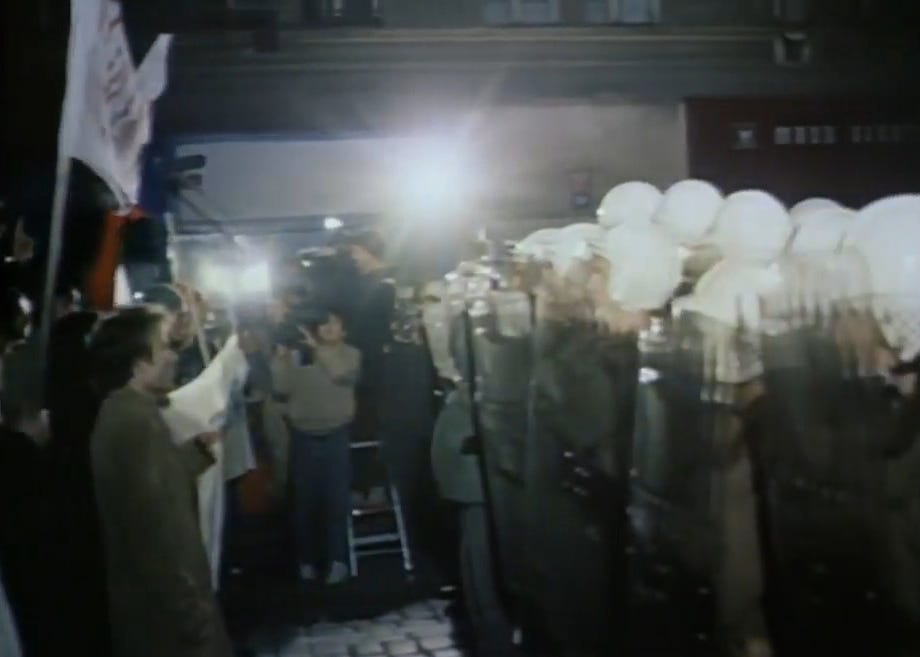
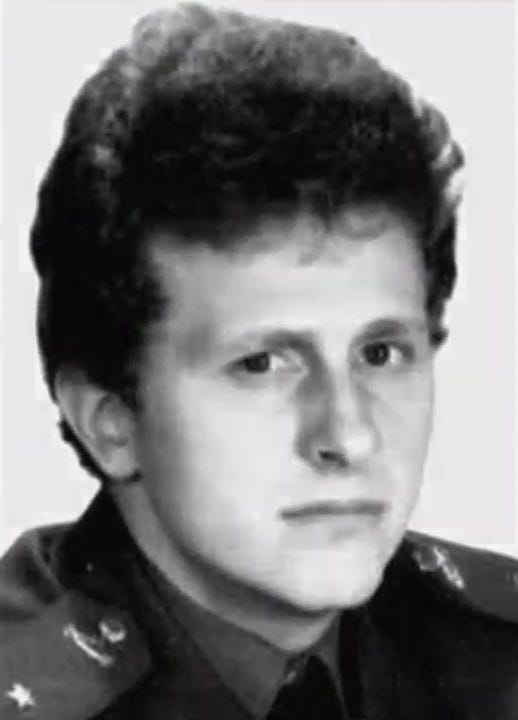

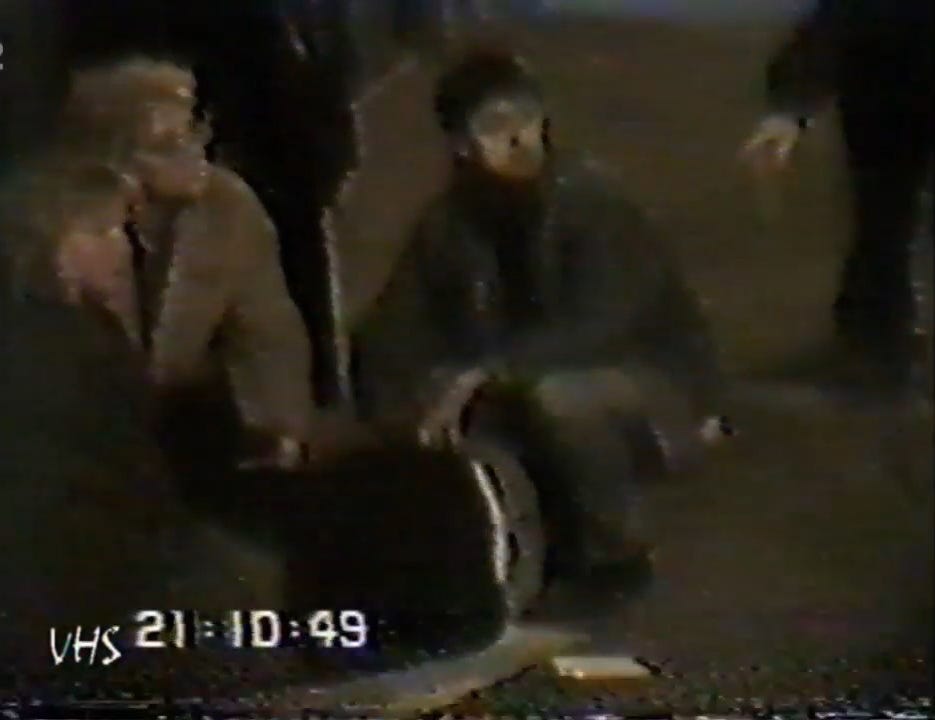
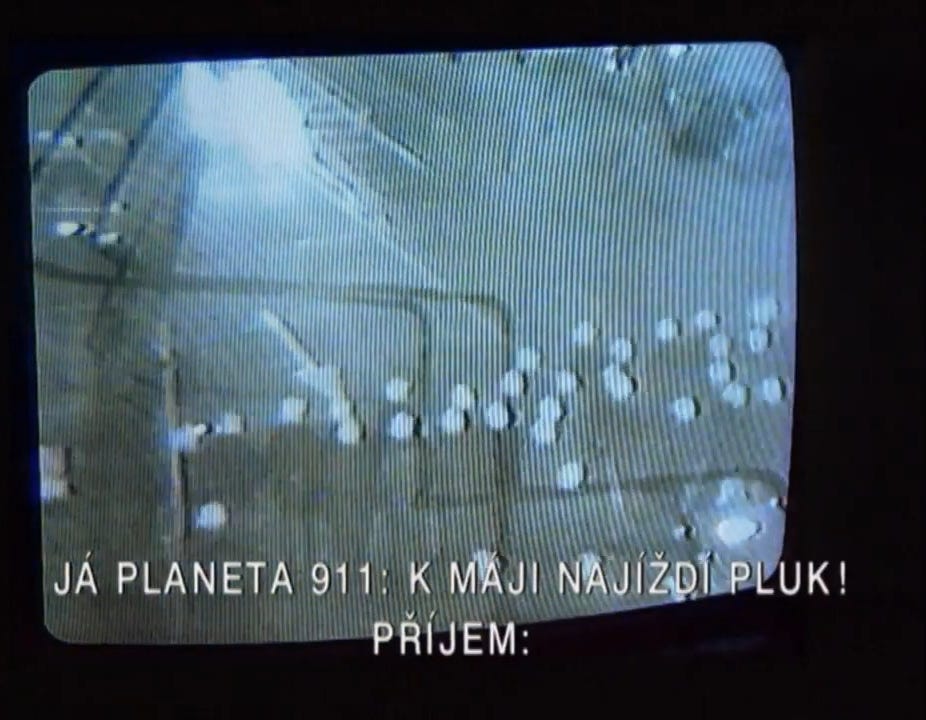

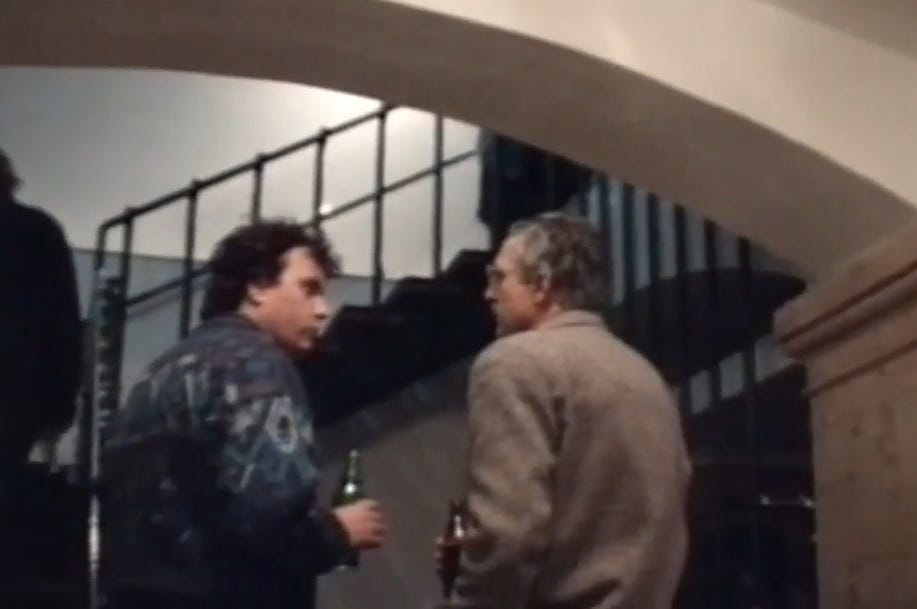
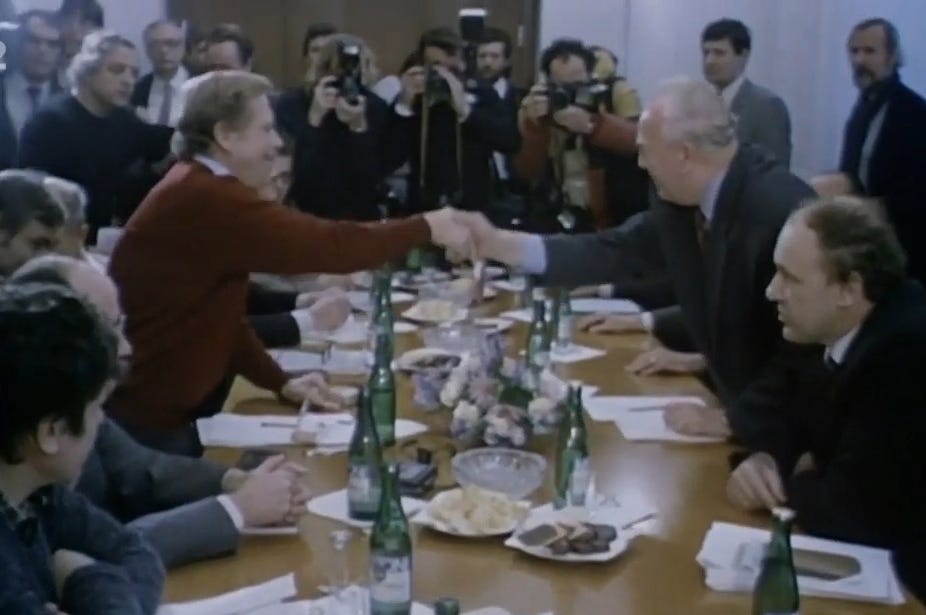
Comments
Post a Comment